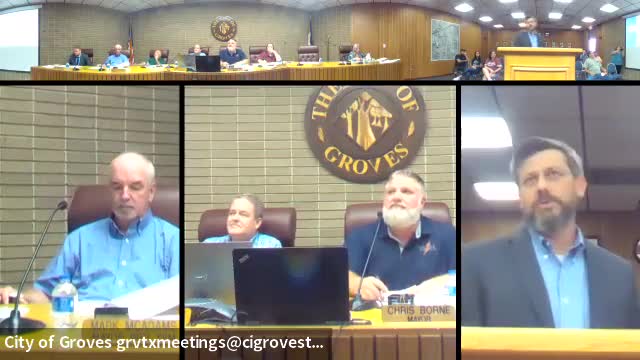Utility faces financial crisis as rates set to rise
August 02, 2024 | Groves, Jefferson County, Texas

This article was created by AI summarizing key points discussed. AI makes mistakes, so for full details and context, please refer to the video of the full meeting. Please report any errors so we can fix them. Report an error »

During a recent government meeting, officials discussed a comprehensive five-year financial forecast for the local utility, highlighting the need for rate adjustments to address rising operational costs and capital improvement projects. The utility currently faces a significant increase in expenses, projected to rise from $4.4 million to $7.4 million annually, necessitating a reevaluation of existing rates.
The meeting emphasized the importance of a sustainable revenue requirement, which refers to the amount needed to cover expenses through customer rates. The proposed plan includes funding $20 million in capital improvements and building a cash reserve, aligning with the council's objectives. A tiered water rate design was also introduced, aimed at encouraging efficient water use while ensuring that the utility can meet peak demands.
Key assumptions in the financial forecast include anticipated inflation, rising construction costs, and employee compensation adjustments. The utility's reliance on existing customers for revenue, rather than growth from new customers, was noted as a factor that may lead to higher rates compared to neighboring communities.
The proposed tiered structure would adjust rates based on consumption levels, with higher charges for those using more water. This approach aims to send a price signal to encourage conservation among higher-volume users while maintaining affordability for lower-volume customers. The current uniform rate system does not effectively incentivize reduced consumption, prompting the need for this change.
Officials acknowledged the potential impact of rate changes on customer behavior, particularly among commercial users, and indicated that the utility would monitor consumption patterns and revenue closely following the implementation of the new rates. The meeting concluded with a commitment to revisit the financial performance annually to ensure the utility remains on track to meet its objectives.
The meeting emphasized the importance of a sustainable revenue requirement, which refers to the amount needed to cover expenses through customer rates. The proposed plan includes funding $20 million in capital improvements and building a cash reserve, aligning with the council's objectives. A tiered water rate design was also introduced, aimed at encouraging efficient water use while ensuring that the utility can meet peak demands.
Key assumptions in the financial forecast include anticipated inflation, rising construction costs, and employee compensation adjustments. The utility's reliance on existing customers for revenue, rather than growth from new customers, was noted as a factor that may lead to higher rates compared to neighboring communities.
The proposed tiered structure would adjust rates based on consumption levels, with higher charges for those using more water. This approach aims to send a price signal to encourage conservation among higher-volume users while maintaining affordability for lower-volume customers. The current uniform rate system does not effectively incentivize reduced consumption, prompting the need for this change.
Officials acknowledged the potential impact of rate changes on customer behavior, particularly among commercial users, and indicated that the utility would monitor consumption patterns and revenue closely following the implementation of the new rates. The meeting concluded with a commitment to revisit the financial performance annually to ensure the utility remains on track to meet its objectives.
View full meeting
This article is based on a recent meeting—watch the full video and explore the complete transcript for deeper insights into the discussion.
View full meeting
